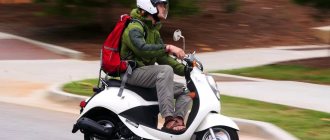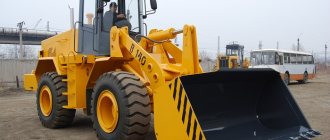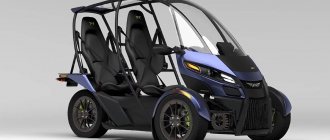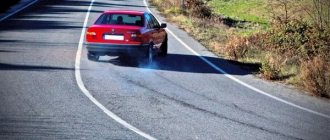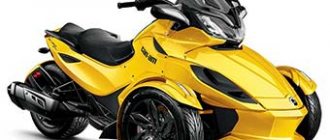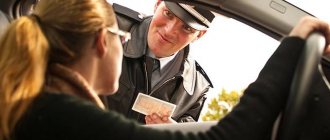Categories of self-propelled vehicles
Self-propelled transport includes cars that require category “A”, “B”, “C”, “D” or “M”. Almost each of these categories has subcategories that more fully characterize the engine size and the ability to travel on such a vehicle. For example, Category “A” allows you to control motor vehicles that are not intended to travel on general purpose highways or have a high speed limit. It should not exceed 50 km/h.
Such transport includes:
- snowmobiles,
- quads,
- swamp walkers,
- motorcycles,
- off-road cars,
- airport apron buses and some other transport.
However, there are some subcategories that also need to be taken into account. Thus, the designation “A1” will indicate the ability to travel only on off-road vehicles, such as a moped, ATV or snowmobile. This subcategory is popularly called the tractor driver permit.
ATTENTION !!! Subcategory “A2” will talk about the ability to travel on off-road vehicles weighing up to 3.5 tons. In this case there should not be more than 8 seats for passengers.
Subcategories “A3” and “A4” will allow you to drive an off-road vehicle with a total weight exceeding 3.5 tons, but at the same time, cars of the subcategory “A4” are used to transport passengers.
What is a self-propelled car
To be considered as such, a self-propelled vehicle must meet the following requirements:
- move on the ground;
- have independent drive (that is, trailers are not suitable);
- have an internal combustion engine (petrol/diesel, it doesn’t matter) with a volume of more than 50 cubic centimeters or an electric motor with a power of more than 4 kilowatts.
It is separately mentioned that the number of “self-propelled guns” also includes tractors.
The exception is vehicles with a maximum speed of more than 50 km/h and various self-propelled military equipment belonging to the Armed Forces, as well as other bodies that ensure state security (for example, the FSB).
Tractors belong to the category of self-propelled equipment
Is a self-propelled car a vehicle?
Undoubtedly. This can be understood by reading the same paragraph 1 of section 1 of the Rules. Indeed, in the definition, a self-propelled machine is directly called a vehicle.
In turn, the current version of the Russian Federation Traffic Regulations (section 1, clause 1.2) states that motor vehicles include, among other things, tractors and other self-propelled vehicles. The main thing is that the transport is intended to transport people and goods. If there is no engine, then the vehicle ceases to be merely mechanical (as is the case with bicycles). So, the question of whether a tractor is a vehicle or a self-propelled machine does not make sense, because it is both at the same time.
Be sure to read: Tractor MTZ 4522 “Belarus”: technical characteristics, description, analogues
A self-propelled gun legally imported into our country or produced in it must have an appropriate passport (PSM) - an analogue of PTS, but its type is somewhat different.
Category "B"
This category of vehicles includes tracked or wheeled vehicles, the engine power of which will not exceed 25.7 kW. It is usually opened for travel by passenger cars that can carry up to 8 passengers. Vehicles cannot have a total weight exceeding 3.5 tons. Category “B” also includes driving mini-tractors and mini-excavators. The most common words are “excavator operator” or “forklift operator”. If the vehicle is used with a trailer, then it is better to take care of opening the “BE” subcategory.
Classification of self-propelled vehicles by category
This division is regulated by the same Rules that were approved by the Government of the Russian Federation on July 12, 1999, by Resolution No. 796. It lists the categories into which these types of equipment are divided. What does it mean? The fact that, if necessary, to drive a particular car, the driver must first open the appropriate category in the “licence”. To do this, you need to pass exams at the Gostekhnadzor department and pay a state fee. The license will indicate not “driver”, but “driver”.
Classification of equipment:
- Category A. This includes vehicles that have a “maximum speed” of 50 km/h or less or do not have access to public roads. Has an additional classification: off-road motorcycles (including snowmobile and ATV); off-road vehicles with a maximum weight of up to 3.5 tons and accommodating up to 9 seated passengers (with driver). For example, small all-terrain vehicles; off-road trucks (over 3.5 tons); off-road buses (more than 9 seats).
- Category B. Wheeled and tracked vehicles, the engine power of which is up to 25.7 kW. For example, a mini excavator or a mini tractor (but not a walk-behind tractor).
- Category C. Wheeled (not tracked!) vehicles with power from 25.7 to 110.3 kW. An example is the MTZ-80 Belarus tractor.
- Category D. This includes any wheeled vehicles with a power of more than 110.3 kW. For example, the mighty K-744 Kirovets tractor.
- Category E. Tracked vehicles with an engine power greater than 25.7 kW. This, in particular, is a bulldozer or snow and swamp-going vehicle like the GAZ-3409 “Beaver”, which is built using a body from Sobol.
- Category F. Agricultural devices. Simply put, any combine – forage harvester, beet harvester, grain harvester, etc. belongs to this category.
Tractor Kirovets
Machines that have a pneumatic drive are classified according to the same criteria as others.
Be sure to read: Tractor MTZ 826
The category of rights to a forklift is determined by its capacity. For small mechanisms this is A, but there are also those that meet the parameters of category B or C. It is unlikely that there will be a roller that fits into A. Usually the roller fits category B, C or D.
In order to drive a crane that is installed on a vehicle chassis and perform work related directly to the crane, you need, in addition to a category C driver’s license, to also obtain a category D tractor driver’s license.
Category "C"
When this category opens, drivers on wheeled vehicles with an engine power potential not exceeding 110.3 kW have the opportunity to travel. Most trucks can be classified as this type of transport. At the same time, subcategory “C” will be available to drivers whose transport does not exceed 3.5 tons. To drive a vehicle weighing up to 12 tons, you will need to open the subcategory “C2”, and above this weight - “C3”. If vehicles are used with a trailer, then it makes sense to open the “CE” subcategory.
What equipment is registered with state technical supervision?
Tractors and self-propelled machines are subject to registration with the State Technical Supervision Authority . Including:
- snowmobiles;
- ATVs;
- all-terrain vehicles;
- loaders;
- excavators.
1. These Rules determine the procedure for state registration of self-propelled vehicles (tractors, self-propelled road-building machines, municipal, agricultural vehicles, off-road motor vehicles and other land-based trackless mechanical vehicles with an internal combustion engine with a volume of over 50 cubic centimeters or an electric motor with a maximum power of more than 4 kilowatts (except for ground-based self-propelled devices of categories “L”, “M”, “N” on wheels with an engine power (engines) of more than 4 kilowatts or with a maximum design speed of more than 50 kilometers per hour, intended for the transport of people, cargo or equipment, installed on them, as well as trailers (semi-trailers) for them and vehicles, self-propelled vehicles, military, special and other types of equipment of the Armed Forces of the Russian Federation, other troops, military formations and bodies, experimental (test) samples of weapons, military and special equipment , including those related in accordance with the legislation of the Russian Federation on military-technical cooperation with foreign states to military products), for which passports of self-propelled vehicles and other types of equipment are issued (electronic passports of self-propelled vehicles and other types of equipment), and other types of equipment (trailers (semi-trailers) of self-propelled vehicles), for which passports of self-propelled vehicles and other types of equipment are issued (electronic passports of self-propelled vehicles and other types of equipment) (hereinafter referred to as equipment).
This paragraph states that vehicles whose engine meets one of the following conditions are registered with the State Technical Supervision Authority:
- volume more than 50 cubic meters centimeters (for internal combustion engines);
- engine power more than 4 kilowatts (for electric motors).
Note. Buses, cars and trucks are registered not with Gostekhnadzor, but with the State Traffic Safety Inspectorate. Registration with the traffic police is discussed in a separate article.
What do special marks mean and why are they needed?
The driver of agricultural equipment undergoes training, like other motorists. The training program will differ significantly from learning to drive a conventional vehicle. For example, to become a tractor driver, you must undergo a training process of 2.5 months. In this case, the driver of a loader up to 4 kW does not need special marks. It is enough for him to have a forklift certificate. The cost of such a document is much lower, and the training period is shorter. The savings here, however, are relative. If ordinary rights need to be changed every 10 years, then annual testing is provided for this document.
ATTENTION !!! The assigned rank to the driver also plays an important role. It is usually indicated at the end of the course. Motorists of category “B” will have the 3rd category, and category “C” will have the 4th. The absence of a certificate of completion of these special courses may serve as a basis for verification of authenticity rights.
Recovering a lost document takes a lot of time and takes a lot of effort. In addition, some driving schools may close over time, which will significantly complicate the process of obtaining a duplicate.
Warehouse workers operating forklifts, electric pallet trucks or stackers must have valid medical certificates. They must indicate the absence of contraindications for driving this type of transport.
When undergoing a mandatory driver's medical examination, the driver must inform the commission about the relevant category he has. This will help save him from numerous checks and troubles in the workplace.
Self-propelled vehicles
The first rule change that you should pay attention to is the change in the concept of “ self-propelled vehicle ”. Let me remind you that a tractor driver’s license allows you to drive self-propelled machines of the corresponding category.
2. Self-propelled machines in these Rules mean motor vehicles not intended for driving on public roads, tractors (except walk-behind tractors), self-propelled road construction and other machines with an internal combustion engine displacement of more than 50 cubic meters. centimeters, not related to motor vehicles.
2. Self-propelled machines in these Rules mean tractors, self-propelled road-building machines and other ground-based trackless mechanical vehicles with independent drive and having an internal combustion engine with a volume of over 50 cubic meters. centimeters or an electric motor with a maximum power of more than 4 kW (with the exception of motor vehicles intended for movement on public roads with a maximum design speed of more than 50 km/h, and self-propelled combat vehicles of the Armed Forces of the Russian Federation, other troops, military formations and bodies performing tasks in the field of defense and state security).
As you can see, the concept of “self-propelled vehicle” has been slightly changed. Now it more clearly and in detail describes the classes of equipment that can be driven with a tractor driver’s license.
What are the requirements for motorists?
To be admitted to theoretical and practical testing, the driver must complete a certain number of hours of training. He will need to ensure that he has a certificate of the appropriate form. This document should not contain any contraindications for driving a vehicle of the selected category.
Opening a certain type of category, perhaps with the achievement of the required age, or requiring driving experience. For example, for category “A1” the driver must be 16 years old. Access to driving under category “A2” can only be issued after reaching the age of 19. For categories “B”, “C”, “E” and “F” you must be 17 years old.
Our lawyers know the answer to your question
Free legal advice by phone: in Moscow and the Moscow region, in St. Petersburg, as well as throughout Russia
. After this, the driver is assigned a date for passing the exams. First, he will have to pass the theory, which includes 20 questions. If the driver answered all of them correctly or made only a couple of mistakes, he is allowed to take the practical test. If you fail to pass the exam the first time, do not despair or panic. A retake can be scheduled in as little as a week. During this period, the driver will be able to fill in the gaps in his knowledge.
When mistakes were made again during re-testing, the driver will be able to retake the theoretical part. After successfully passing the driving practice, he will be issued a license. This year, the certificate is obtained using a simplified system. Many State Traffic Inspectorate offices are fully automated, so the driver does not need to provide a photo. It is better to first clarify this issue with the authority responsible for issuing rights, but it is very rare to find a non-automated service in our country.
Payment of state duty
For the issuance of a new license, the driver will have to pay 2,000 rubles. In this case, it does not matter at all whether he receives them for the first time or opens a new category. Wanting to acquire an international license, the driver will have to spend 3,000 rubles. You can pay the state duty through self-service terminals, electronic wallets, a bank card, at the post office, on the State Traffic Inspectorate website or through the State Services portal. The last option will be preferable for many drivers, because in this way they can save up to 30% of the payment. When paying the state duty by other means, the driver will need to pay the full amount.
It is very important for the driver to have permission to drive the appropriate type of transport. In this case, offenders will face serious administrative penalties. Only compliance with traffic rules will help you avoid significant fines and save time and effort. When driving a car without the appropriate category, when the offender is stopped by a representative of the State Traffic Inspectorate, a protocol will be drawn up. The driver will face a significant administrative penalty, as well as the evacuation of the car to a fine area. The unpleasantness of the situation is aggravated by the fact that payment for tow truck services and storage at a specialized vehicle parking lot also falls on the driver.
IMPORTANT !!! For driving a vehicle without the appropriate category, the penalty can reach 15,000 rubles. The only exception is training driving in a specially equipped car with an instructor. The tow truck fee can be up to 2,000 rubles, and every day the car is stored at a fine site will increase the amount that will have to be paid quite significantly. Given this information, it is much easier and cheaper to obtain a license of the appropriate category, rather than spending huge sums on releasing your car or paying fines.
Avoiding the need to incur significant financial losses is quite simple. To do this, you need to travel, following all traffic rules strictly. Only in this case can the driver count on a safe and comfortable ride in the city or on the highway.
